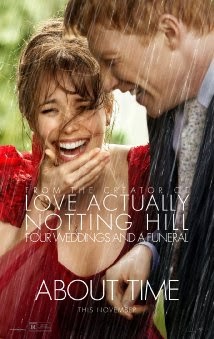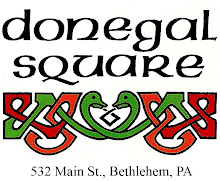Cake dances, herring funerals, and "cludogs" are all part of Ireland's varied Easter rituals.
Easter is the most impor

tant date on the Roman Catholic calendar – far more important the Christmas from a religious standpoint. Because Catholicism has been the dominant religion in Ireland, Easter has been almost universally celebrated there for centuries. Over time, many traditions have grown up around the holiday that are peculiar to Ireland.
Although Easter doesn’t appear to be connected to a specific old Roman or Celtic holiday (unlike Christmas and Halloween), it seems related to a variety of old spring festivals that relate to the farming calendar. Given it’s timing in spring, around the Vernal Equinox, Easter is associated with old fertility celebrations which dovetail well into the Christian story of resurrection.
Some of the popular non-religious traditions of the holiday – the Easter bunn

y and others - seem to have come down from these pre-Christian rites. One such pagan fire festival honored the patron goddess of Spring, the goddess "Eostar" who came to be known as "Ostara". Her feast day was held on the full moon following the vernal equinox (March 21)-an almost identical timeline for the Christian Easter celebration. There is very little documented evidence to prove this, but one popular legend is that Eostre found a bird, wounded, on the ground late in winter. To save its life, she transformed it into a hare. But "the transformation was not a complete one. The bird took the appearance of a hare but retained the ability to lay eggs...the hare would decorate these eggs and leave them as gifts to Eostre." Many modern Wiccans and Pagans celebrate Ostara as a time of renewal and rebirth, a time for celebrating nature and sowing seeds.
Lent, a season of fasting, begins 40 days before Easter. No meat is eaten during this time, though very observant people may choose an additional favorite food or pleasure like alcohol or smoking to give up as well. The last week of Lent, from Palm Sunday until Easter, is when fasting is observed most strictly.
Here’s a list of Easter traditions and beliefs. Some are religious, some purely social and some of seem based mainly on old superstitions:
GOOD FRIDAYThe name Good Friday is generally believed to be a corruption of God's Friday. In Ireland, since the days of the early church, it has always been dedicated to penance, fasting, and prayer.
As might be expected, it was the severest day of Lenten austerity. Most people went beyond even the black fast prescribed by the church. They ate nothing at all until midday and even then, all they took was three mouthfuls of bread and three sips of water - three being in honor of the Holy Trinity. Little or no work was done on the land, except for the planting of a small quantity of grain or potatoes to invoke a blessing on the crops. The rest of the time was spent making sure the house, yard and out-buildings were clean and tidy.
• Cleaning the house completely (“spring cleaning”), sometimes as a preparation for an old ceremony where a local priest comes to bless the house.
• Planting a small quantity of seed (crops not flowers) to create a blessing on the family.
• Avoiding any possible bloodshed by doing no work with tools.
• Go To Confession and remain quiet for part of the day.
• Holy well water is said to have curative powers on this day.
• Mark one egg laid on Good Friday to be eaten on Easter Sunday.
• If a child is born in Good Friday and then baptized on Easter, he or she will have the gift of healing (a boy born on Good Friday will go into the priesthood).
• Anyone who dies on Good Friday will do directly to heaven.
• Visits should be paid to holy wells and graveyards.
• No fishing is done from boats – only sea food gathered on shore (seaweed; shellfish) will be part of the Easter meal.
• One should get a haircut, to prevent headaches.
EASTER SATURDAY
Pity the poor butchers in old Ireland during the Lenten season. Not one good Christian soul would buy their beef, or any other kind of meat. The main source of protein for the long days of fasting was herring, because it was cheap and plentiful. But, after eating it so often, people were delighted to see the back of it. So much so, they celebrated with a mock funeral on Easter Saturday.
• Attend church ceremony to have holy water blessed, then drink 3 sips of it for health and sprinkle on family members and sometimes even cattle on the farm for good luck.
• Attend Easter Vigil on Saturday night. The church will be decorated with purple banners. At 11 o’clock, all lights in the church are turned off and a Paschal candle is lit to symbolize Christ’s rising from the dead.
 EASTER SUNDAY
EASTER SUNDAYLong ago, the people of Ireland shared a common pious belief with many countries in Europe: when the sun rises on Easter Sunday morning, it dances with joy that the Saviour has risen.
Customarily, families would get up before dawn and make their way to a hill top or other elevated location. Most likely it would have been a place where there was a special holy well. There, they would wait to see the sun do a jig, as it rose above the rim of the earth. For those not wishing to risk damaging their eyesight by looking directly into the brightness, they would look at its reflection in a tub of water.
• Rise with the sun and dance in celebration.
• Butchers conduct a mock funeral in honor of a dead herring. This symbolizes then end of Lenten abstinence. A “herring procession” then marches to the local church. (Some also traditionally whip the herring as part of this odd rite. People were generally sick and tired of eating herring by the end of Lent.)
• Take down the “spoilin meith na hlnide,” a small piece of meat pinned up on the wall during Lent, and burn it to give a pleasant smell to the inside of the house.
• Boil and paint eggs, have rolling contests and egg hunt for children. (The idea of a rabbit laying colored eggs, which lead to the popular “Easter bunny” image, originated in Germany.)
• Conduct a “cludog,” where children gather eggs and roast them on a special device or contraption on the farm. Shells are saved and placed around the bottom of a May bush.
• Celebrate with a “cake dance,” a contest where the best dancer wins a cake.
• Close out Easter celebration with a bonfire where all gather round the celebrate.
Easter MondayLong ago, the day after Easter was one that Irish people eagerly looked forward to. Not only was it a favorite day for buying and selling livestock and merchandise at fairs and markets, it was also a time for enjoying sports, games, sideshows, dancing, eating, drinking, gambling, and perhaps, even some fisticuffs.
For many years, Easter Monday was also a holy day of obligation in the Roman Catholic Church. That meant one had to go to Mass and abstain from work. All well and good, except that the riotous behavior which often followed during the day and well into the evening didn’t sit well with the clergy. in 1828, the Bishop of Kildare and Leighlin, Dr. John Doyle, prevailed upon other bishops to petition the Pope to make Easter Monday an ordinary working day. The intention was to disassociate the Church from what was perceived as unseemly fun at the fair. The Pope granted the petition, so that from 1829, Easter Monday was no longer a holy day.
 The Decoy Bride – When the world's media descend on the remote Scottish island where a Hollywood actress is attempting to get married, a local girl is hired as a decoy bride to put the paparazzi off the scent. Starring David Tennant and Kelly Mcdonald.
The Decoy Bride – When the world's media descend on the remote Scottish island where a Hollywood actress is attempting to get married, a local girl is hired as a decoy bride to put the paparazzi off the scent. Starring David Tennant and Kelly Mcdonald. Tristian and Isolde (For Rent) – A loyal knight unites the fractious English against the oppressive Irish, but is deeply conflicted after the woman he loves is compelled to marry his beloved King. Starring James Franco and Sophia Myles.
Tristian and Isolde (For Rent) – A loyal knight unites the fractious English against the oppressive Irish, but is deeply conflicted after the woman he loves is compelled to marry his beloved King. Starring James Franco and Sophia Myles.


































